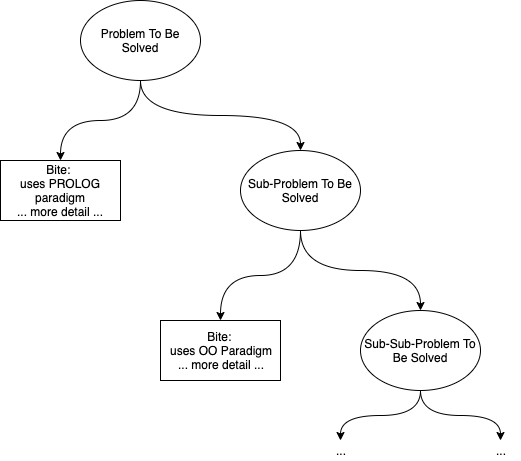When a problem looks to be complicated, a strategy for attacking the problem is “divide & conquer”.
Most programmers know about Divide & Conquer.
What problems look to be complicated?
For one – multi-tasking is considered “hard” by many programmers. Multi-tasking is actually simple, but needs to be further divided (and conquered). For example, multi-tasking, as it is know today consists of several sub-problems:
- • time-sharing
- • memory sharing
- • networking, IPC, communication
- • concurrency.
Let’s apply Divide & Conquer to the multi-tasking. (1) Time-sharing is needed only by operating systems, such as Linux, Windows, MacOS, etc. Let’s throw time-sharing aside. Gnarly problems, like priority inversion go out the window.
Memory sharing was an issue when memory was expensive. Memory is no longer expensive. Let’s throw memory-sharing aside. Thread-safety, etc., go out the window.
We are left with networking and concurrency.
Networking is easily reduced to it most basic form – a wire.
Concurrency, at its most basic form is 2 apps communicating across a wire.
We know how to write the two apps –say, using Python, JS, etc., etc..
Yet, we don’t have a “language” for app-to-app communication. There is no popular Python-for-comms language. There are budding attempts at this kind of language, the most common being UNIX® bash, but bash is tangled up in complexity – time-sharing and memory sharing and variables and, etc., etc. ... FBP[1] is a not-popular-enough attempt as this kind of language, but it tends to be tangled up with multi-tasking libraries which are tangled up with time-sharing and memory-sharing. The FBP site references Linda. CPS[2] and CSP[3] are text-only attempts to tackle this problem – they simply demonstrate that the text-only mentality does not extend well to concurrent applications. TC;DU (Too Complicated ; Didn’t Use).
An acquaintance of mine builds products that measure the health of race horses. His app uses some 37 processors. He uses a language called MicroPython.[4] He has no problem with multi-tasking. One processor, one thread. Node.js? Why bother? Processors are cheap. Linux? Why bother? Processors are cheap. When he wants to get really complicated, he creates an event loop on a processor, that checks for incoming events and does some work in the background.
We need a lean language for coordinating a hierarchy of processors[5]
We need to apply divide & conquer – throw out operating systems, throw out heavy-weight thread libraries, throw out memory sharing, etc.
Divide & Conquer and Hierarchy leads to thinking about the Design task as a fractal. Every Component in a Design “does one thing well” and leaves the rest for further sub-dividing.
Where does this stop? It depends on the application and the Designer’s tolerance for boredom.
As long as the Designer makes the choices clear, expresses the DI,[6] then future readers (Optimization Engineers, Maintenance Engineers, Testing Engineers, etc.) can understand – and deal with – the choices made in the design. There is no one way to Design something, there is only “here is how I chose to design it” documentation (executable documentation would be more precise than static documentation).
Q: Is the documentation for a Design, itself a fractal? A binary tree. Each node contains a bite of the solution and “the rest”. Each Bite describes the paradigm and details used for that bite.
For example:

[1] Flow-Based Programming <ref>
[2] Continuation Passing Style
[3] Communicating Sequential Processes <ref>
[4] https://micropython.org/
[5] N.B. I do not use the phrase CPU, since none of the processors are Central.
[6] Design Intent.